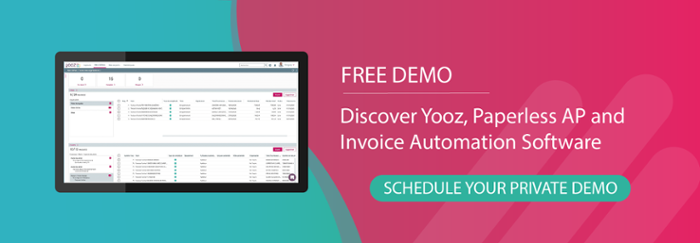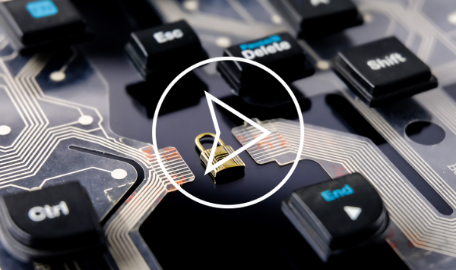Outdated, fragmented, and manual purchase-to-pay processes are slowly killing businesses. From late payments and strained supplier relationships to compliance challenges, and even cases of fraud, the pressure on accounts payable (AP) departments to combat inefficiencies is reaching boiling point.
The top three problems with manual accounts payable processes were highlighted as too time-consuming (43%), late supplier/vendor payments (29%), and lost financial documents (27%) according to a 2021 survey of UK finance decision-makers. The same survey also found that accounts payable departments in organizations were spending almost two days (43 hours) on average managing and approving vendor invoices.
Fed up with number crunching tasks such as invoice validation and entering data into spreadsheets, AP teams are desperate for innovation to liberate their role and free up time and resources for more critical, strategic activities. Only by streamlining the entire process, from initial order of goods to procurement to processing vendor and supplier payments, can accounts payable departments enjoy new and improved workflows which scrap dull, repetitive tasks, improve business operations, and keep partners, suppliers, and staff happy.
Businesses are also itching to improve efficiency in the finance department, but many are still yet to integrate automation in the purchase-to-pay cycle. Yet the longer manual finance processes are in use, the more organizations are slowed down in terms of business operations and growth. So what are the current stumbling blocks in enhancing the purchase to pay cycle? And how can automation help improve the purchase to pay process?
What is the purchase to pay process?
Put simply, the purchase-to-pay cycle covers the processes required in procuring goods and/or services from one company to another. Like the name suggests, the process starts in the initial acquisition of goods and ends when supplier payment is sent and received, but also covers key steps in between such as receipt of an acknowledgment, budget authorization, receipt of delivery, and invoice processing.
For example, say that an employee has requested new stationery. In this instance that employee would create a request or order form listing out what it is that they require, where, and for how much - such as 10x biro pens from an online retailer for £2. Once the order form is handed to the appropriate team member for sign off, they would manually check if the retailer is an appropriate vendor, goods requested, and the total price. Once the request is approved internally, a purchase order is created and sent to the supplier which sends a receipt of goods in return and starts the process of delivering and shipping the goods. An invoice is then submitted by the supplier, in this case, a stationery provider, and payment is issued from the organization that requested the goods.
Seems simple, right? However, every step of the purchase-to-pay process is important to get right, which is why strong coordination and communication between supplier and purchaser are key, as is the use of technology platforms that help smoothen the cycle. However, this isn’t the case with manual purchase-to-pay processes as human intervention only intensifies the risk. For example, invoices can arrive and be sent without any context behind them, or it might be that no one knows who is responsible for approving purchases.

The challenges of manual purchase to pay processes
With manual purchase-to-pay processes, the time taken to approve invoices can take days or even weeks. This is not an acceptable way of doing business, especially for smaller suppliers or sole traders which rely on almost instant payment. Not only can late payments harm supplier relationships, but it can also lead to legal cases and hefty fines.
But it’s not just the accounts payable department or suppliers that are being left frustrated by this daily scenario. Employees in all departments rue the amount of data they have to fill out in spreadsheets and forms, while the constant jumping of hoops and manual chasing of colleagues to get approval on day-to-day goods via email can also lead to huge inefficiencies and productivity losses further down the chain.
Inaccurate information can also reduce the speed of invoice processing and increase the risk. Human beings aren’t perfect, and it can be very easy to miss a decimal point here and mistake information when having to deal with hundreds of invoices every week. However, when you’re dealing with the safeguarding of a company’s finances, there can be no room for error. When the stakes are this high, one person or department alone should not bear the responsibility of checking invoice information is correct.
In addition, there’s the risk of fraud. As manual purchase-to-pay processes reduce the visibility and control of finances, it can be easy to mistake a fraudulent email or invoice from a real one, especially if teams are working remotely or among different departments and locations. It’s for these reasons, and many more, that businesses are increasing their use of automation to provide new efficiencies for the finance department and the entire business.
Purchase to pay process improvement through automation
As we’ve already highlighted, businesses need to automate the time-consuming, labour-intensive, and high-risk tasks associated with it to truly optimize their purchase to pay processes. One of the ways automation in the purchase-to-pay process can help with this is through three-way matching. Whereas manual-based processes rely on staff to highlight any issues before they become a problem - something which is almost impossible when dealing with hundreds or thousands of invoices every month - three-way matching can flag any discrepancies in the accounts payable cycle before payments are made.
It does this by automating workflows, such as scanning invoices for data and checking it against historical documents (an action that would have previously been done by manually searching for invoices in a system or, worse, paper documents in a filing cabinet). Three-way matching automates the checking of invoices against supplier information, the initial purchase order, and receipts to ensure all information is correct and that payment can be processed. Whenever three-way matching finds any issues, such as the wrong amount of goods or incorrect pricing, the vendor or supplier payment is held until a solution is found. This is a vital benefit in dealing with fraudulent invoices and payments.
However, it’s not just accounts payable staff that stand to benefit from automating these tasks, as there are key reasons for doing so that can have a direct impact on the entire business. From colleagues trying to get items and orders approved so they can get back to work and CFOs or finance leaders looking to increase the amount of data they can use for reporting purposes, there are several significant advantages organizations can realize by switching to automated purchase-to-pay processes today:
1. Increase spend visibility
One out of five finance managers (21%) highlighted that poor visibility of the invoice management process is one of the key reasons for paying invoices late within their organisation. This lack of vision into what’s being spent within the business is costing more than money, with supplier and vendor relationships on the line as well. Controlling costs is a constant area of concern for financial leaders and implementing technology that provides 360-degree visibility into spend is an important step to achieving better control.
With automation, spend data is automatically collected and stored in a central system, providing real-time visibility into financial processes as well as more accurate spend analytics for better forecasting. Finance leaders increase spend transparency while providing top-level insight into real-time and historical spend, equipping the business with accurate data that can lead to smarter decision-making and insight into what’s being spent, by who, and at which suppliers.
2. Speed up payments
It’s an all-too-common scenario in the accounts payable department. With bills and invoices coming in on an almost daily basis, businesses will typically only pay bills at the very last minute to protect its own cash flow. But these businesses might be missing a trick here, as faster vendor payments that enable companies to receive funds on the same day they’re requested could not only harbour better relationships but also represent a significant opportunity for both sides.
Automation software is the key here, helping reduce time spent managing the purchase-to-pay process by around 80% compared to manual processes and allowing for swift payments and better supplier relationships. This isn’t just beneficial for large enterprises either, as there is a significant opportunity for small and medium-sized businesses to view their cash flow in real-time using automated purchase-to-pay processes.

3. Reduce operating costs
The number of invoices received digitally is increasing daily, placing a heavy burden on finance teams to manage and process payments on time. Large organizations can receive hundreds of invoices every day which, if handled manually, can lead to hours of productivity wasted. It’s also becoming more expensive to process invoices, with costs increasing year-over-year by around 8%.
Automating invoice capture and data entry can help reduce the costs associated with manual accounts payable processes and cost per invoice by around 80%. According to research by advisory firm Ardent Partners, an organisation that manually processes 100 invoices per month with an average cost of £10.89 per invoice would be spending around £13,068.00 every year in processing costs. Improving the purchase-to-pay function with automation can help cut this cost to around £1,188.00 annually, dropping cost-per-invoice to around 99p.
4. Improve productivity
Improving the purchase-to-pay function remains top of mind for finance managers and accounts payable staff alike, especially when it comes to increasing productivity. But with a constant stack of invoices to get through and little help from technology, it’s finally time businesses started looking into automation to free up their staff from labour-intensive and mind-numbingly repetitive jobs that take up so much of their day.
It’s jobs such as manual data entry and scanning invoice information that can not only be quickly and easily dealt with by automated purchase-to-pay processes but could actually improve accuracy and therefore decrease the likelihood of repeating those tasks. In turn, this can free up the accounts payable department to focus on more important things, such as forecasting and reporting, while also helping to encourage a happier, more productive department that can enjoy a more strategic position within the business.
5. Reduce risk of fraud
Processing fake invoice and fraudulent payments can have serious implications for businesses, clients, and suppliers, so it’s absolutely vital this never happens. But financial processes that rely on manually scanning and checking invoice data against purchase orders and receipts open up the opportunity for error, with no guarantees that this risk will be completely stamped out.
With an automated purchase-to-pay workflow, supplier and invoice information is automatically tracked using a three-way matching process. Because this instantly triggers an alert if a single line of false data or information is detected, the chance of fraud, duplicate payments, or misinformation creeping into the system is significantly decreased (and so too are the chances of serious problems).
With so much potential value, there’s little reason not to start realizing the benefits for yourself.
If you’re looking to improve your purchase-to-pay processes, find out how Yooz can help!
Elevate your Purchase-to-Pay Process with Yooz's unmatched process improvement
Unlock unprecedented improvements in your purchase-to-pay process with Yooz, the leading software solution designed to revolutionize your workflow seamlessly. Yooz's cutting-edge AI, Deep Learning, and RPA technologies automate 80% of invoices without prior configuration, eliminating manual errors and enhancing efficiency. Experience the unique combination of real-time AI performance, extreme simplicity, and maximum business richness, ensuring that your purchase-to-pay process reaches new heights of optimization. With Yooz's all-in-one platform, you can streamline every aspect of your P2P process, from purchase request to payment, in a single integrated solution. Trusted by top accounting firms worldwide and recognized for its innovation, Yooz is the ultimate choice for businesses seeking to enhance their purchase-to-pay process. Join the ranks of enterprises benefiting from Yooz's unmatched process improvement capabilities and redefine your purchase-to-pay workflow today.







